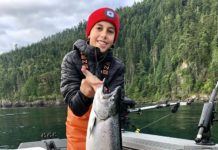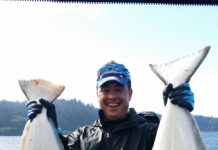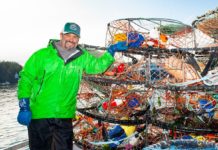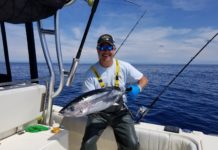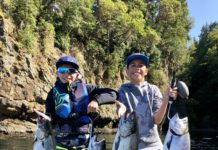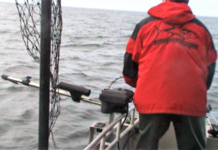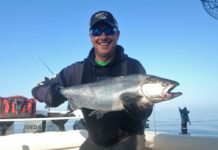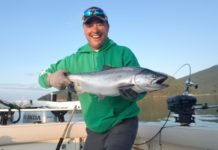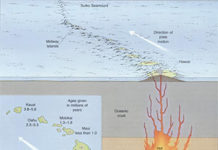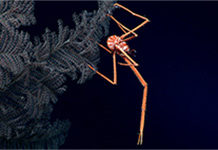How does NOAA deliver live video feeds from a ship to my computer?
NOAA Ship Okeanos Explorer's high-tech control room allows onboard scientists to watch live video from remotely operated vehicles, review mapping and other collected...
What does “CTD” stand for?
A CTD Rosette is lowered into the water to measure the salinity, temperature, depth and concentration of particles in the water column. Image...
How is light distributed in the ocean?
Munidopsis albatrossae, a blind “squat lobster,” lives at depths up to 2,500 meters. Because there is no light at this depth, they would...
How does pressure impact animals in the ocean?
Many deep-sea organisms, such as this escape swimmer Benthothuria, lack lungs or gas-filled spaces that make them more susceptible to the intense pressures...
What are the different types of plate tectonic boundaries?
This image shows the three main types of plate boundaries: divergent, convergent, and transform. Image courtesy of the U.S. Geological Survey.
Did...
What is the difference between a stalactite and a stalagmite?
A diver makes his way through Deep Blue Cave, Walsingham System, Bermuda. Image courtesy of Jill Heinerth, Bermuda Deep Water Caves 2011 Exploration,...
Are all corals found in warm, shallow water?
In 2012, scientists investigating deepwater canyons off the coasts of Virginia and Maryland discovered, for the first time, Lophelia colonies in the area....
Are glass sponges made of glass?
The primary skeleton of many glass sponges is a network of large spicules that have fused together to form a matrix that defines...
What is a volcanic "hotspot"?
A hotspot is theorized to form as one of Earth's outer tectonic plates moves over an unusually hot part of the Earth's...
Are squat lobsters really lobsters?
Squat lobsters look like lobsters, but they are actually more closely related to hermit crabs. They belong to the phylum Arthropoda. The...


